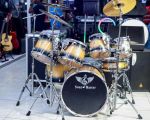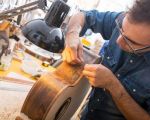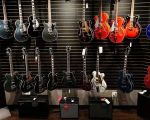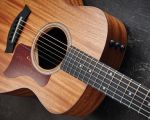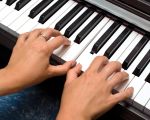Who Invented the Recorder Musical Instrument? A Deep Dive into Its History
- 1. Introduction to the Recorder
- 2. Who Invented the Recorder?
- 3. Evolution of the Recorder Through Time
- 4. The Role of the Recorder in Music History
- 5. Modern Use of the Recorder and Its Popularity
1. Introduction to the Recorder
The recorder is a fascinating woodwind instrument with a rich history that dates back to medieval times. While it’s often associated with early music and the Renaissance, the recorder has seen periods of great popularity and influence throughout various eras. With its distinct sound and unique structure, the recorder continues to captivate musicians and music enthusiasts alike.
Despite being a relatively simple instrument in terms of design, the recorder has played an important role in the evolution of music. It is often used in educational settings to introduce students to the world of music due to its ease of use and melodious tone. But have you ever wondered who invented the recorder, and how did it become such a beloved instrument across centuries? Let’s dive into the fascinating history behind this remarkable instrument.
2. Who Invented the Recorder?
The origins of the recorder are difficult to pinpoint to a single inventor, as the instrument has evolved over many centuries. The earliest forms of the recorder are thought to have been developed during the Middle Ages, with some scholars tracing its roots back as far as the 12th century. The recorder is considered one of the oldest wind instruments, and its design is similar to ancient flutes used by early civilizations.
The recorder's design was heavily influenced by its predecessors, like the ancient Greek aulos and the early European flutes. However, the recorder as we know it today began to take shape in the 14th century. It was during this time that the instrument started to gain prominence in European music, thanks to the advancements in woodwind design. While no single individual is credited with inventing the recorder, it is widely accepted that the instrument’s development was a collaborative effort between numerous craftsmen and musicians throughout the medieval and Renaissance periods.
2.1. The Recorder’s Predecessors
Before the recorder, the concept of wind instruments capable of producing a melody had existed for centuries. The aulos, a double-reed instrument from ancient Greece, shares similarities with the recorder in terms of its musical range and tone. The recorder, however, replaced the aulos in popularity around the 14th century as it was easier to play and could produce a more refined, melodic sound. It’s clear that while no single inventor is responsible for the recorder’s creation, its predecessors played a key role in its eventual form.
3. Evolution of the Recorder Through Time
The recorder has undergone several significant changes over the years. Initially, recorders were made from wood, but as music became more complex, the instrument evolved in both design and material to suit the changing needs of musicians.
3.1. The Renaissance Period
During the Renaissance, the recorder reached its height in popularity. Music from this period often featured recorders prominently, and they were a common instrument in both court music and folk music. Renaissance composers like Michael Praetorius and Hans Leo Hassler wrote many pieces specifically for the recorder, further establishing its place in music history. During this time, the recorder was constructed in different sizes, each offering a range of pitches, allowing for more diverse and intricate musical compositions.
3.2. Baroque and Classical Music
In the Baroque era, the recorder’s popularity began to decline as the harpsichord and violin gained prominence. However, some composers like Johann Sebastian Bach continued to include the recorder in their compositions. By the Classical period, the recorder had largely been replaced by other instruments such as the flute and oboe. Still, its unique sound ensured its place in both folk and sacred music.
3.3. The Recorder’s Revival
The recorder saw a resurgence in the 20th century, particularly in the realm of early music performance. As interest in historically accurate performances grew, musicians began to rediscover and reintroduce the recorder in modern orchestras and chamber music ensembles. The instrument also found a home in schools and conservatories, where it is often used to teach basic music theory and technique.
4. The Role of the Recorder in Music History
The recorder has played a critical role in shaping the development of Western music. It was once the most widely played instrument in European courts and churches, helping to lay the foundation for modern woodwind instruments. The recorder also played a crucial role in the development of wind instrument techniques, influencing later designs of flutes, oboes, and clarinets.
As part of the early music revival, the recorder has maintained its legacy through specialized groups and performances of early Baroque and Renaissance music. Many historical music pieces that were once composed specifically for the recorder are still performed today, showcasing the instrument’s continued relevance in music history.
5. Modern Use of the Recorder and Its Popularity
Today, the recorder is often used in educational settings to introduce children and beginners to the world of music. Its simple fingerings and melodious tone make it an ideal instrument for music education. Many students in schools around the world learn to play the recorder as their first woodwind instrument, providing a solid foundation for future musical exploration.
Though it may have lost some of its earlier prominence in professional music, the recorder still enjoys popularity in early music ensembles, folk music, and even modern pop culture. The instrument is a common feature in contemporary performances of medieval and Renaissance music, with talented musicians using it to bring ancient compositions to life.
To explore the world of music and discover the best instruments for your musical journey, I highly recommend checking out Beat Trigger, where you can find a wide selection of instruments and resources to enhance your learning and playing experience.

